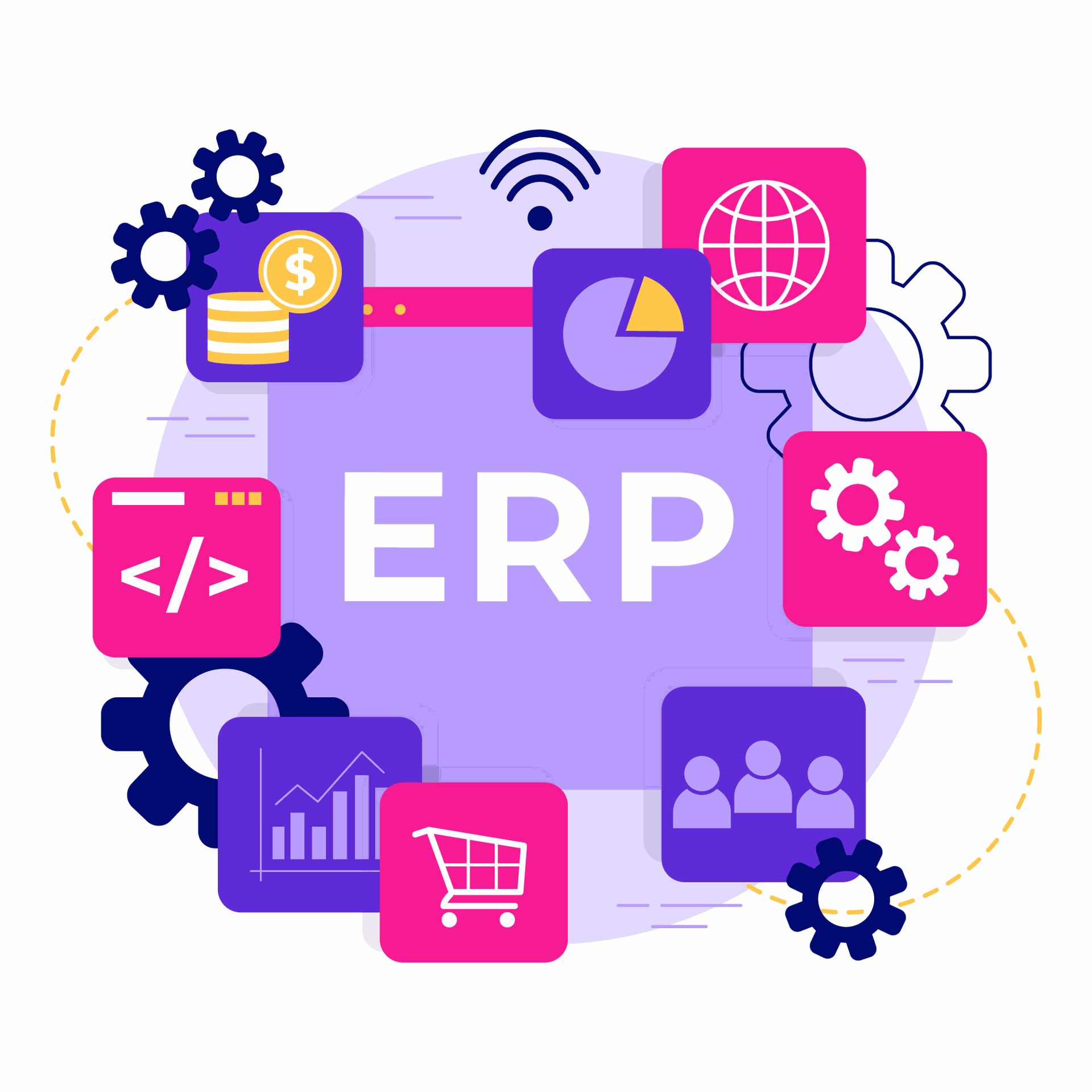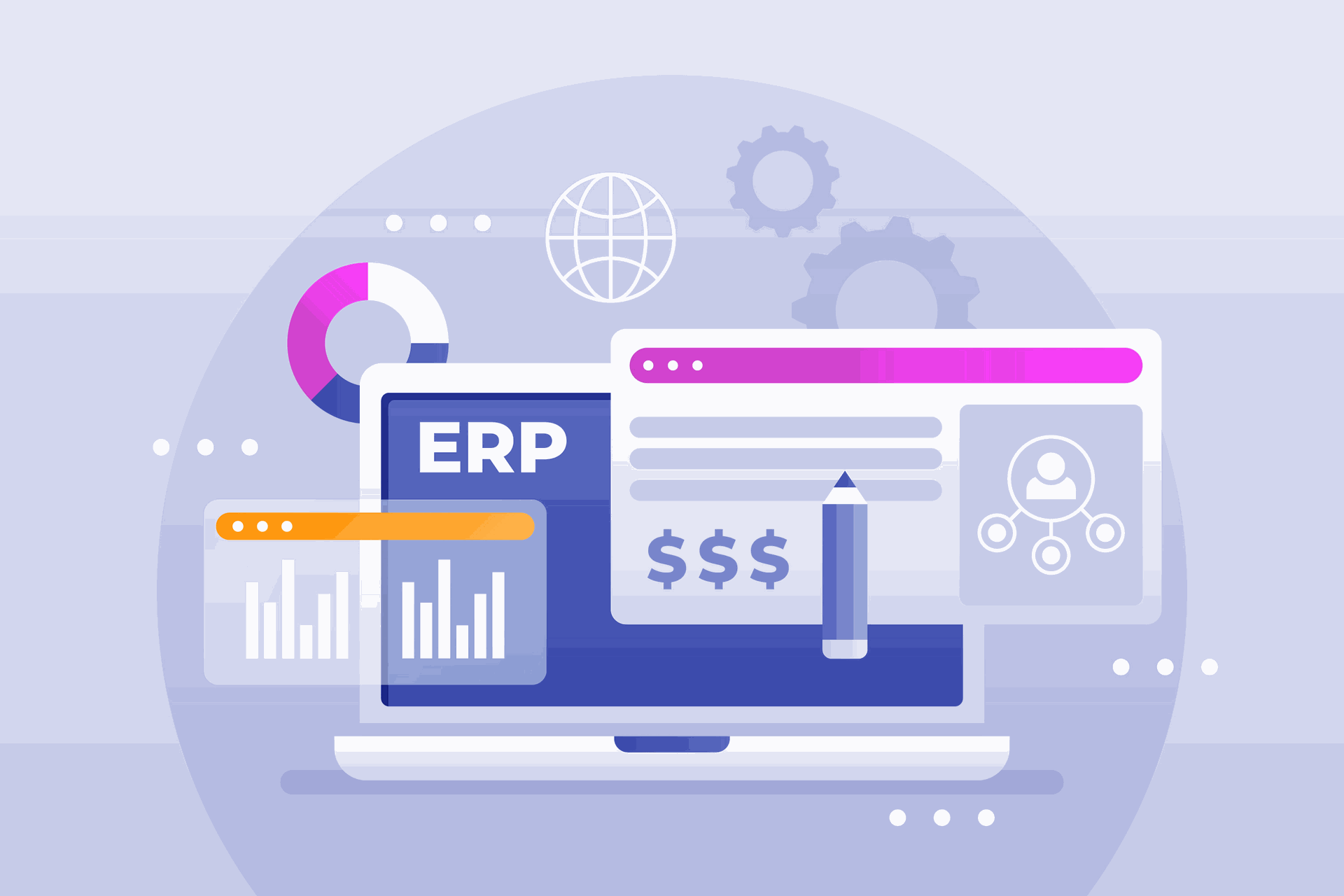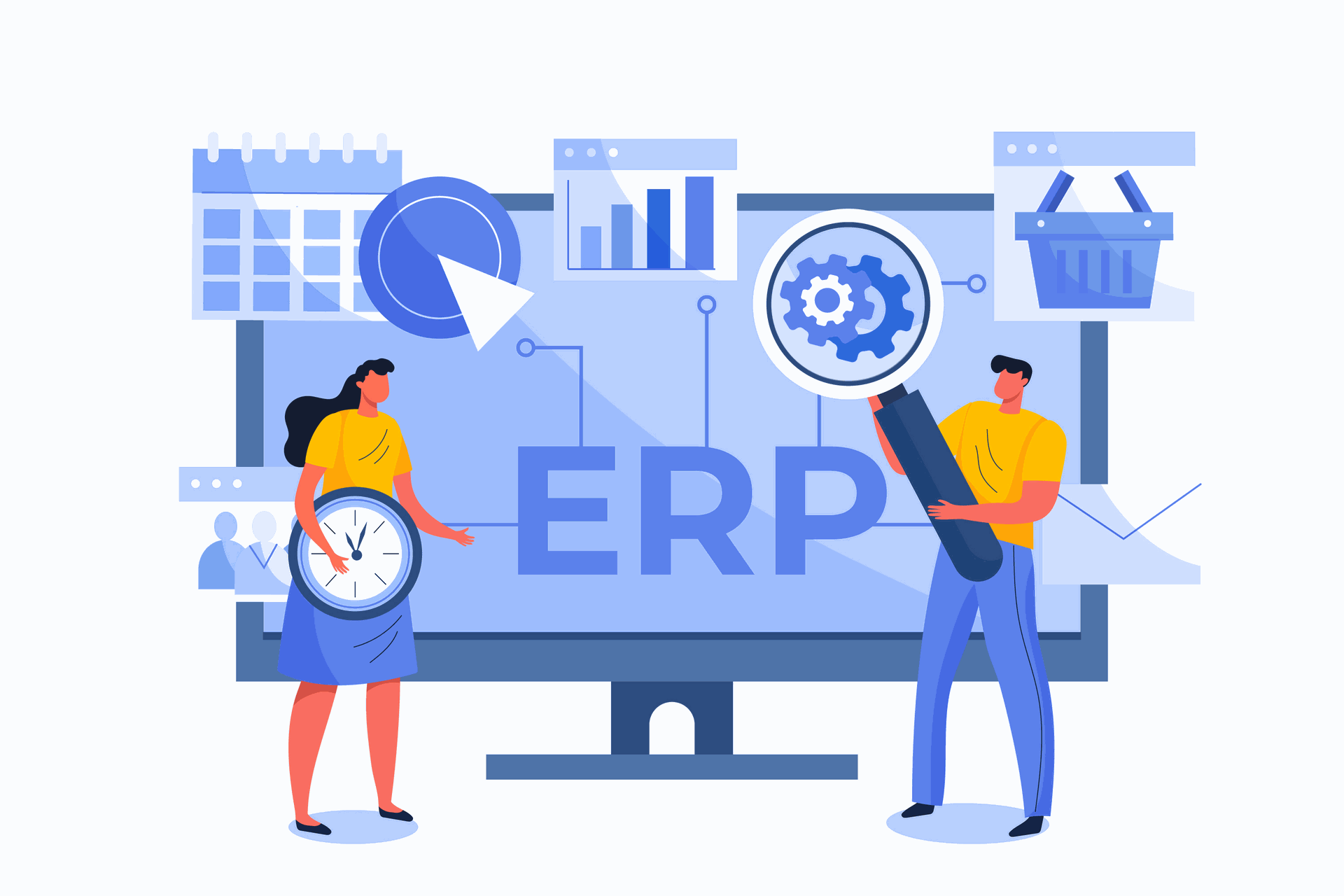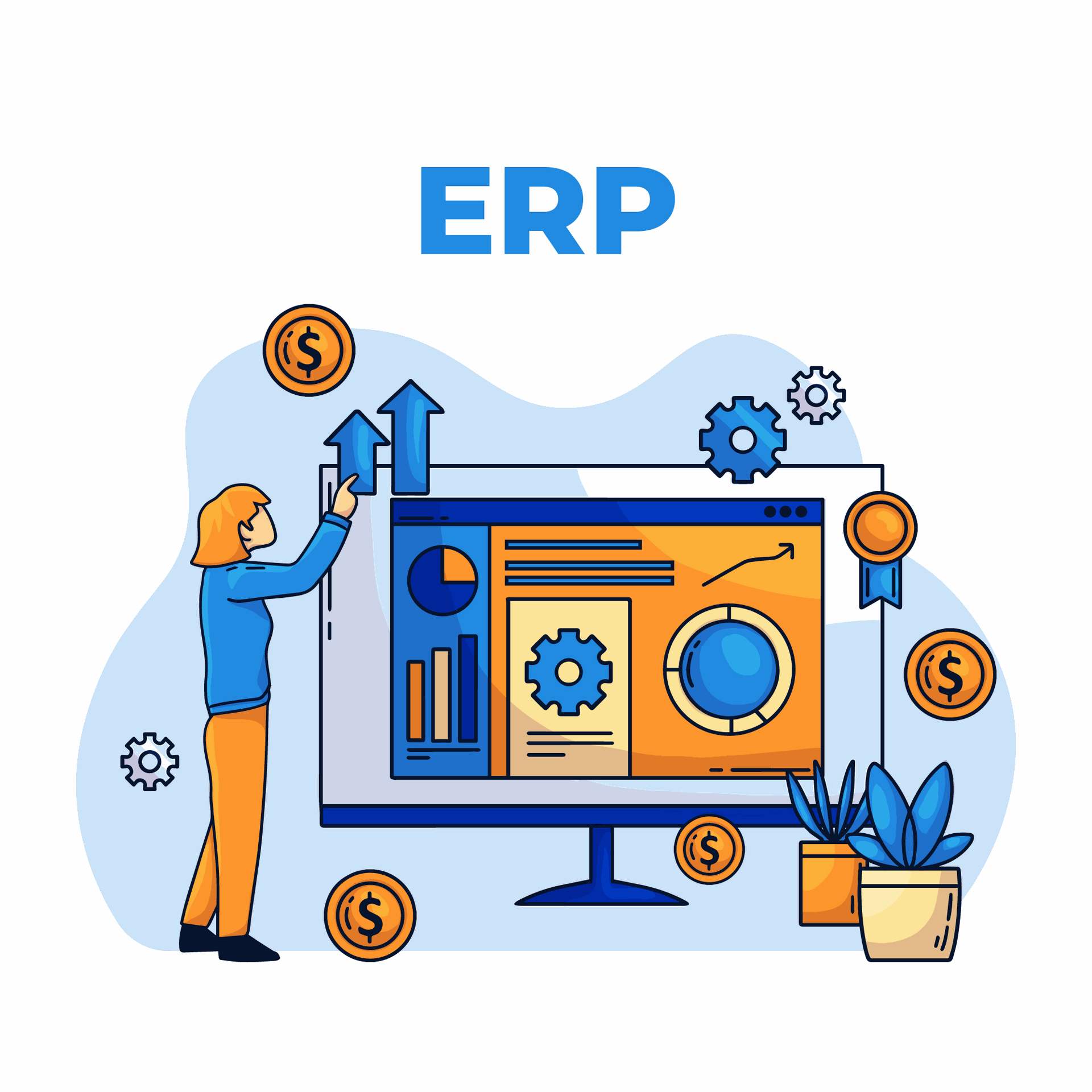In the context of a rapidly developing digital economy, digital transformation is no longer an option but a prerequisite for businesses, especially for small and medium-sized enterprises (SMEs). However, this process often faces numerous challenges due to limitations in resources, technology, and implementation experience.
One of the key solutions that helps SMEs overcome these barriers and gradually modernize their management processes is the application of an ERP (Enterprise Resource Planning) system. By integrating all business operations onto a single platform, ERP not only helps reduce costs and minimize errors but also supports faster and more accurate decision-making.
In this article, we will examine why ERP is an indispensable tool on the digital transformation journey for SMEs, the specific benefits it brings, as well as crucial considerations when selecting and implementing such a system.
1. Digital transformation and the position of ERP in the overall picture

Digital transformation is not merely the integration of technology into a business; it is a comprehensive restructuring procesprocess, from internal procedures and business models to the way value is created for customers. With the rapid evolution of the market and the demand for personalized experiences, businesses especially small and medium-sized enterprises (SMEs) are forced to innovate to survive and grow.
By 2025, digital transformation has become a critical survival factor for all businesses, with SMEs being no exception. The increasingly competitive and volatile business environment requires SMEs to adopt digital technology to optimize operations, enhance customer experience, and expand their market reach.
In the overall digital transformation landscape, Enterprise Resource Planning (ERP) is increasingly seen as the "backbone" of enterprise management systems. In 2025, ERP solutions have evolved significantly with capabilities for AI integration, intelligent automation, and real-time data analytics, helping SMEs not only manage efficiently but also forecast trends, optimize costs, and improve their competitiveness.
Notably, ERP in 2025 is no longer a standalone system; it has become a central hub connecting with other platforms such as CRM, eCommerce, IoT, and advanced business intelligence (BI) tools. This allows businesses to operate with flexibility across multiple channels and readily adapt to new business models like the platform economy or cross-border e-commerce.
For SMEs, investing in a modern ERP system in 2025 not only helps to digitize internal processes but also creates a foundation for business expansion, participation in global supply chains, and leveraging sustainable development opportunities in the digital era. ERP is the most crucial technological cornerstone for realizing a comprehensive digital transformation strategy.
2. The superior benefits of ERP for SMEs

Process integration – enhancing operational efficiency
Instead of each department using a separate software or relying on manual operations, an ERP (Enterprise Resource Planning) system integrates all departments into a single, unified platform. This ensures a seamless flow of information, preventing data duplication, inconsistencies, or communication breakdowns between departments.
For example:
A small-scale furniture manufacturing company with about 40 employees struggled when its sales department failed to promptly update orders for the production and warehouse teams. This resulted in delayed product deliveries, inaccurate inventory levels, and customer complaints. After implementing ERP, all orders were entered directly into the system, which automatically fed into production planning and real-time inventory management. This helped the business reduce order processing time by 30% and significantly improve the customer experience.
Centralized data management – enabling faster and more accurate decisions
ERP helps businesses store all their data—from sales and costs to inventory and financial reports—in a single, real-time updated location. This gives leadership a comprehensive overview, allowing them to make swift decisions instead of waiting for manual reports from each department.
For example:
An electrical equipment distribution company in Hanoi uses ERP to track sales by channel (online/offline), by employee, and by region. Thanks to the intuitive data dashboard, the sales director can immediately identify which product lines are selling slowly or which regions need a targeted promotional campaign, enabling them to take timely action to optimize business performance.
Cost savings and reduced internal waste
ERP helps automate many tasks that were previously done manually, from order entry and inventory management to timekeeping and payroll. This not only reduces indirect personnel costs but also minimizes errors that arise from manual processes.
Example: A fashion SME with 10 stores in Ho Chi Minh City used to face a problem of surplus stock at one store and shortages at another due to a lack of a synchronized inventory management system. After implementing an ERP, inventory data was synchronized across all branches. The system now automatically suggests transferring goods between stores to optimize stock levels. The company reported a nearly 15% reduction in warehousing costs within the first six months after implementation.
Enhanced scalability and flexibility
Modern ERP systems are typically designed in a modular format. This means that a business can start by implementing essential functions (such as accounting, sales, and logistics) and gradually expand to other functions (like HR, CRM, and manufacturing) as the business grows. This is highly suitable for SMEs with limited resources who want to plan for long-term growth.
Example: A tech startup in Da Nang initially implemented an ERP just to manage sales and finance. After a year of strong growth, they opened new branches and began integrating additional modules for HR, recruitment, and project management to streamline all their processes. The expansion was swift and did not disrupt their operations.
Regulatory compliance – increased transparency and eliability
An ERP system helps store documents, invoices, transaction logs, and financial reports in a standardized format, meeting the requirements for audits, taxes, and internal management. This is a crucial factor for SMEs looking to raise capital, expand partnerships, or join professional supply chains.
Example: A food processing company in Binh Duong needed to achieve ISO certification and product traceability to supply to supermarket chains. After implementing an ERP, they were able to record detailed information for each batch of raw materials, the production process, and inventory control by expiration date. The system also enabled them to print traceability reports for each order. This not only helped them meet the strict requirements of their partners but also allowed them to expand their distribution channels into international markets.
3. Effective ERP implementation steps for SMEs

Implementing an ERP (Enterprise Resource Planning) system is a strategic project that impacts a company's entire operations. For SMEs (Small and Medium-sized Enterprises), where resources are often limited, a well-planned and phased approach is crucial to avoid waste, operational disruptions, or project failure.
Here are six effective steps for SMEs to implement an ERP system:
- Assess Needs and Define Implementation Goals A business must clearly define its reasons for adopting an ERP system. Are the goals to improve inventory management, reduce accounting errors, track orders, or prepare for business expansion?
- Select the Right Vendor and ERP Software ERP systems come in many types: open-source solutions (like Odoo), local software (such as Bravo, FAST), or international solutions (SAP, Oracle NetSuite). SMEs should choose a system that aligns with their size, industry, and budget.
- Standardize Processes and Cleanse Data Many SMEs realize during this phase that their internal processes are inconsistent and redundant, or that their data (product names, item codes, supplier information) is inaccurate or duplicated.
- System Configuration and Customization This is the stage where the vendor and the business work together to configure the system: creating users, assigning permissions, setting up business workflows, and, if necessary, developing specific functionalities.
- Staff Training and User Acceptance Testing (UAT) Training is a vital step. If employees don't understand how to use the system, it won't be effective, no matter how good it is.
4. Key considerations for SMEs when implementing ERP

Choosing the right software, not just the most expensive
- Select an ERP with features that align with your company’s actual size and needs.
- Avoid investing in an overly complex system that exceeds your usage capabilities.
- Start with basic modules and expand after the system is operating stably.
Leadership must be directly involved
- ERP is a strategic project; it cannot be completely delegated to subordinates.
- Leaders need to participate in setting the direction, overseeing the process, and making decisions.
- A lack of top-down commitment is the leading cause of ERP implementation failure.
Employee training is a critical factor
- A system is only effective when users know how to use it and are willing to.
- Provide clear training on roles, processes, and basic operations for each department.
- Encourage a shift in habits from using Excel to using the system.
Input data needs to be cleaned and standardized
- Legacy data is often messy, duplicated, or lacks standardization.
- Before migrating data into the system, it's crucial to review, assign codes, and standardize naming conventions.
- Inaccurate data will cause errors in operations and reporting.
Don't expect immediate results
- ERP is not a "magic wand"; it requires time to adapt and optimize.
- You may not see significant benefits immediately, but persistence and adjustments are key.
- Continuously monitor, gather feedback, and make improvements after each phase.
Implement in phases, not all at once
- Break the implementation into smaller stages, such as deploying one module or one department at a time.
- This approach helps control risks, reduces pressure on employees, and ensures quality.
- Start with core processes before expanding to others.
Choose a reliable vendor with long-term upport
- An implementation partner needs to understand your industry, provide strong support, and offer guidance after the Go-live date.
- Select a vendor with experience working with SMEs and a good track record with clients.
- A clear contract outlining maintenance, training, and issue resolution is essential.
5. Sota Solutions - a reputable digital transformation solution provider
In the journey of digital transformation, choosing the right ERP implementation partner is a critical factor, especially for small and medium-sized enterprises (SMEs) with limited resources. Sota Solutions offers ERP solutions built on the Odoo platform, which are designed to be flexible, easily customizable, and suitable for the operational scale of many businesses in Vietnam.
With a team of consultants experienced in various fields, Sota Solutions goes beyond merely implementing software. They support businesses from the process survey and system design phases to post-implementation training and maintenance. Businesses in sectors such as retail, distribution, manufacturing, and logistics have chosen Sota to progressively digitize their operations. Additionally, Sota regularly updates its solutions with new technology trends like AI, IoT, and big data to better meet digital transformation needs in 2025 and beyond.
6. Conclusion
Digital transformation is creating numerous opportunities but also presents many challenges for SMEs. In this journey, ERP is not just a management tool but a core foundation that helps businesses build an intelligent, efficient, and sustainably scalable operational system.
Successful ERP implementation doesn't depend on a company's size but on thorough preparation, a suitable roadmap, and the selection of the right partner. With a flexible, easy-to-implement, and cost-effective ERP solution, SMEs can completely close the gap with larger enterprises and enhance their competitive capabilities in an increasingly digitized business environment. Contact us for a free consultation and materials.